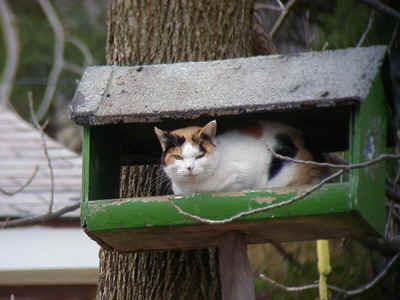 Eagerly
anticipating the winter finch invasion.
Eagerly
anticipating the winter finch invasion.  Eagerly
anticipating the winter finch invasion.
Eagerly
anticipating the winter finch invasion.
Winter in upstate New York can be bleak for birds, with most of the breeders having migrated to the south. What warms the hearts of winter birders is the thought that it might be a "Finch Winter," when those species that normally stay up in the boreal forest head down to our climes to spend the winter. Just what drives these species to come south periodically is still open to debate, but general consensus is that the south-ward movements are triggered by the failure of normal foods in the north, especially the cone crops of the boreal pines, firs, and spruces.
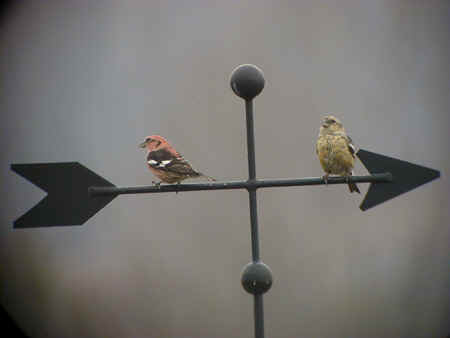
Depending on which way the wind blows, some of the species might appear, or all might show up. Each species seems to act relatively independently of the others, and rare are the winters when all are common. The winter of 2001-2002 is turning out to be a good one for central New York, with all of the desired species appearing, although not all are present in large numbers.
Below are some photos of the most common winter finch species to occur in central New York, taken this season around Ithaca and Dryden, Tompkins Co., NY. All pictures were taken by my son Jay and me and are © Kevin J. McGowan, unless otherwise noted. Most were taken with an Olympus D-450 digital camera through a Swarovski HD-80 spotting scope.
Cast of Characters
Evening Grosbeak (Coccothraustes vespertinus)
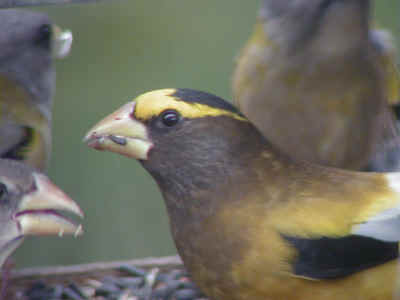
A few Evening Grosbeaks pass through our area nearly every winter, but they are much more abundant in some than in others. They breed regularly in the Adirondacks, although they only started breeding there in the 1940's.
Pine Siskin (Carduelis pinus) 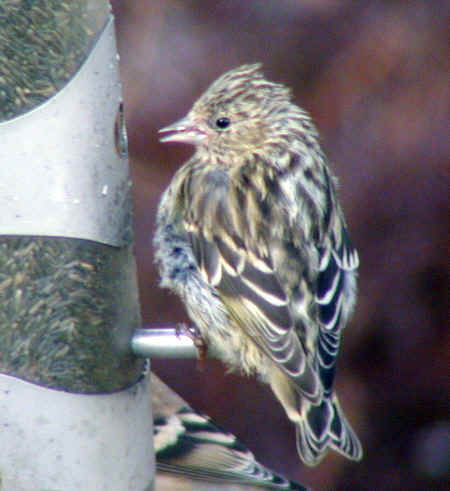
Erratic in its occurrence in New York, some years this species is abundant at nearly all feeders, and other years it does not appear. In extreme invasion years siskins may breed across New York.
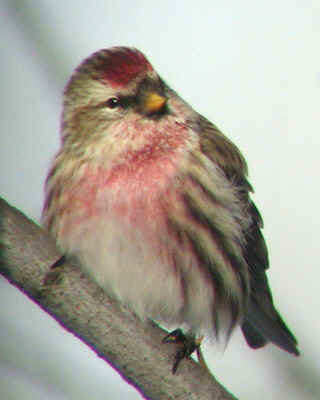 Common
Redpoll (Carduelis flammea)
Common
Redpoll (Carduelis flammea) 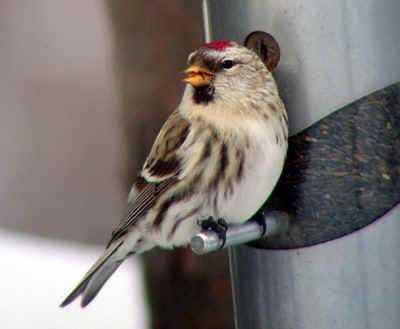
On a continental scale Common Redpolls have a two-year cycle of southerly irruptions. Their occurrence in New York is less regular, although a few are noticed nearly every winter. No breeding has been recorded in New York, nor is it expected. The high arctic breeding Hoary Redpoll (C. hornemanni) is a very rare winter visitor, even in years of abundant Common Redpolls. (We don't have current photos of Hoary Redpoll, but you can see some pre-digiscoping images of one that came to our feeder in 1998 HERE.)
White-winged Crossbill (Loxia leucoptera)
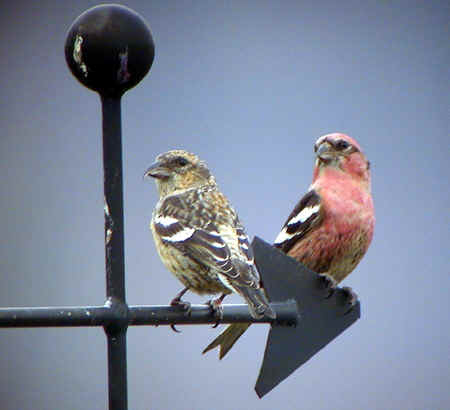
A very irregular winter visitor, White-winged Crossbills have been known to breed in New York in both winter and summer, mostly in the Adirondacks. Although they periodically will visit feeders, White-winged Crossbills are predominantly birds of spruce, fir, and larch forests where they use their odd-shaped bills to open cones.
Red Crossbill (Loxia curvirostra) 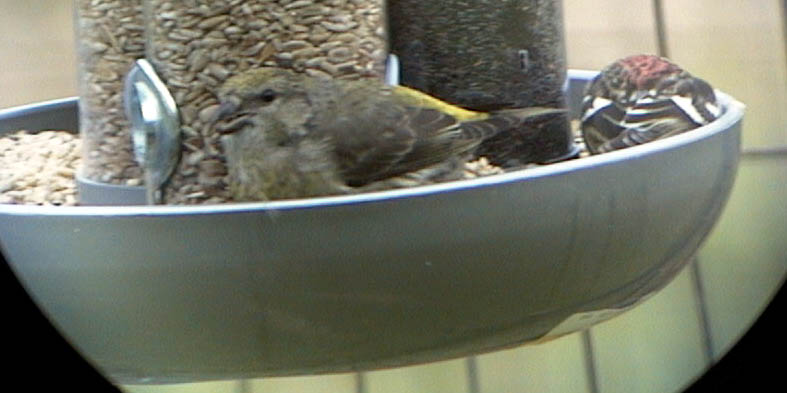 (Photo
by Irby Lovette)
(Photo
by Irby Lovette)
Slightly more common than White-winged, Red Crossbills still occur in our area only infrequently. They take advantage of nearly any conifer species with cones and breed irregularly in the state. Four different forms are known to occur and breed in New York, but they are difficult to distinguish.
Pine Grosbeak (Pinicola
enucleator) 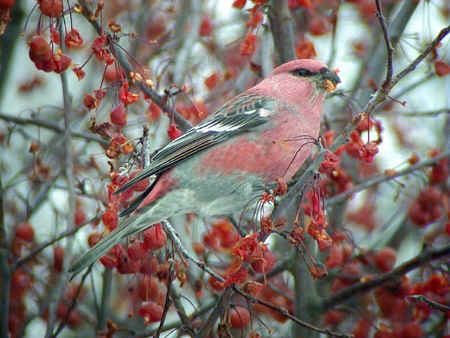
Pine Grosbeak is the rarest of the winter finches in New York, with the exception of Hoary Redpoll and the accidental visitor from Eurasia, the Brambling (Fringilla montifringilla) (one New York record). In years when it occurs, however, it can be quite numerous. Although it has bred in Maine and northern New Hampshire, no breeding has been suspected in New York. Pine Grosbeaks will occasionally visit feeders, but most seem to be found in ornamental crab apple trees where they eat the seeds of the small, messy fruits. For photos of some local visitors, click here.
Return to the Bad Photos page.
Return to Kevin McGowan's home page.
Go to the Crow Page.